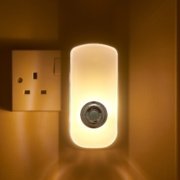Subsidence claims surge following hot summer
Last Updated on November 27, 2019 by admin
 Having faced freezing temperatures and snow drifts in late March, the summer of 2018 couldn’t have been in greater contrast when it comes to the weather. Britain baked in record breaking temperatures amid a hot dry spell that seemed to go on for months. Large swathes of land were so parched that fires erupted across the country in places such as Manchester and Dartmoor.
Having faced freezing temperatures and snow drifts in late March, the summer of 2018 couldn’t have been in greater contrast when it comes to the weather. Britain baked in record breaking temperatures amid a hot dry spell that seemed to go on for months. Large swathes of land were so parched that fires erupted across the country in places such as Manchester and Dartmoor.
But, while we all basked in sunshine, could there have been an unsuspected consequence? Are some homeowners now paying the price for this hot weather? The Association of British Insurers (ABI) has reported that during July to September 2018, subsidence claims reached a 12-year high. Claims reached the same levels experienced during a similar heatwave in 2006.
10,000 households made claims totalling £64 million. The increase potentially and partially related to the drying out of properties and foundations during the heatwave.
So what is subsidence and how do you spot the signs? Importantly, what do you need to be watching out for in your home or holiday cottage?
What is subsidence ..?
Subsidence occurs when the ground beneath a property moves, collapses or shrinks. This causes additional stress on the foundations of the building it’s supporting.
Wondering how the weather could potentially cause subsidence in a property? All ground contains water; when the ground is subject to long periods of heat that water begins to be lost, causing the ground to shrink (a little like a sponge without any water). As the ground shrinks, the foundations on which the property were built are strained and pulled in different directions, with this stress potentially leading to problems with the overall structure of the building.
How do you spot potential subsidence?
- The tell-tale sign of subsidence is the sudden appearance of cracks within the property
- These may well be more prevalent around doors and windows
- Any cracks will often appear thicker than a 10 pence piece
- Cracks will usually be diagonal in nature due to the forces being placed on the property walls; often be wider at the top than the bottom
- If you have wallpaper in your cottage you may find that this begins to rip or crinkle as the wall shape distorts slightly.
What to do if you’re worried about subsidence
It’s important to highlight that not every crack is as a result of subsidence – both new and older properties will move slightly over time and have only visual cracks as a result, which won’t be of any structural concern. We recommend that if you do have any concerns about subsidence in your home or holiday home you report them to your insurer. You may need to have a structural survey undertaken to ensure that everything is as it should be. A full structural survey is also advised before purchasing a home, buy-to-let or holiday home property.
To discuss how our specialist holiday home insurance could keep your cottage covered, please give our helpful team a call on 01237 429 444.







Leave a Reply
Want to join the discussion?Feel free to contribute!